Provantis®
Provantis is the industry-leading GLP-compliant preclinical study management software, supporting every study phase from design to reporting. Trusted globally by study directors and lab managers, it streamlines workflows, ensures data integrity, and accelerates regulatory submissions.
With Provantis, users experience improved data quality, accelerated turnaround times, reduced workloads, and substantial cost savings.
Request a demo today to learn how Provantis can support your team.
What is Provantis?
Provantis is a fully integrated solution that optimizes study design, minimizes the risk of error, and ensures compliance while providing a seamless, efficient user experience. Managing preclinical studies can be complex; poor study oversight and substantial data review may add months to a timeline, while data errors and study deviations risk the integrity of results.
As an all-in-one solution, Provantis simplifies the entire preclinical study process, from study design and data capture to analysis and reporting. By integrating workflows across study phases, Provantis improves data reliability, reduces costs, and accelerates time to submission.


Designed for both GLP and non-GLP environments, Provantis is scalable to meet the needs of individual scientists, research organizations, pharmaceutical companies, and universities. Its modular design offers full customization to meet the requirements of even the most complex studies.
Provantis provides flexible deployment options to suit your organization’s needs while supporting robust security, accessibility, scalability, and training.
Key Benefits of Provantis
Reliable End-to-End Solution
Provantis is a highly stable, feature-rich solution that supports the entire process across multiple study designs and types.
Seamless Data Integration
Provantis integrates data across study phases, minimizing the risk of data loss and providing an end-to-end solution.
Enhanced Data Integrity
By reducing repetitive data entry and ensuring all actions are documented, Provantis minimizes errors and supports SEND-compliant, audit-ready submissions that meet regulatory requirements*.
Cost Savings
Provantis reduces errors and study durations, cutting costs by up to 18%* and allowing users to remain competitive in a sensitive market.
Boosts Collaboration
Provantis facilitates real-time data sharing across departments while maintaining a full chain of custody, streamlining peer review and collaboration.
Flexible and Modular
Provantis adapts to evolving study needs with a customizable, modular design for a solution that grows with your lab.
Faster Turnaround Times
Provantis accelerates studies by streamlining data collection and reducing administrative tasks, resulting in reporting time reductions of up to 50%*!
*based on data reported by SRI Biosciences.
Core Features/Modules
A fully integrated preclinical platform, Provantis offers a comprehensive list of feature-rich modules. Whether your lab organization needs end-to-end study management or a more precise application of this powerful software, Provantis provides the tools for accelerating your research goals.

General Toxicology
A versatile, protocol-driven solution designed to support toxicologists in conducting studies across any species, duration, or administration route while ensuring compliance and flexibility.
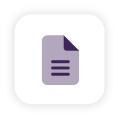
Study Setup
Streamline study design with our powerful protocol creation tool, suitable for a wide range of study designs and types from early discovery to regulatory submissions.

Pathology
Manage necropsy, histopathology, and organ weight data efficiently with tools tailored for pathologists.
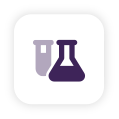
Clinical Pathology
This module provides a wide variety of instrument interfaces, handles sample requests, and enables direct capture of sample data.

Reproductive Toxicology
Designed for reproductive toxicologists and teratologists, this module supports studies including ICH protocols, multigeneration, developmental toxicity, and behavioral and developmental neurotoxicity studies.
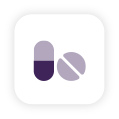
Pharmacy Formulation
Comprehensively track test item usage, from receipt and formulation to dispensing and disposal, with a robust record-keeping solution.

Data Exchanger
Import external data into Provantis securely and efficiently, ensuring integration of new and historical datasets through a validated process.

Report Assembly
Simplify the preparation of study documentation, including final reports, protocols, data tables, and statistical analyses, with an integrated report assembly tool.
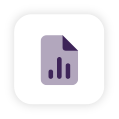
Tables & Statistics
Generate tabulated study data and leverage an integrated decision tree for advanced statistical analysis.
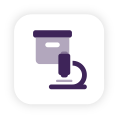
Spotlighter™
Store, retrieve, and evaluate histopathology data from control and treated animals across studies, ensuring comprehensive historical data management.
Accelerate Strategic Growth with Provantis
Provantis is the preferred choice of many global labs for preclinical study management, delivering unmatched usability, flexibility, and a strong return on investment. Its intuitive, modular design adapts to your unique study needs, whether simple or complex, GLP or non-GLP. Provantis integrates seamlessly across all study phases, eliminating data silos and ensuring a full chain of custody for enhanced data integrity.
With Provantis, users achieve their target timelines for study completion, reduce reporting workloads, and realize significant cost savings. For example, SRI Biosciences achieved a 15-18% cost reduction and halved reporting times while maintaining its reputable FDA compliance track record. Check out our customer success story below for more details!
By accelerating workflows, minimizing errors, and streamlining regulatory submissions, Provantis empowers organizations to focus on advancing research and achieving strategic growth.
How It Works
Provantis streamlines workflows with an integrated, user-friendly platform covering all preclinical study phases.
Study Design
Create comprehensive study protocols with built-in templates and configurable options for GLP and non-GLP settings. Users can include test article information, animal data, and activity schedules.
Data Collection
Capture in-life and pathology data directly with intuitive, clickable options, reducing errors and saving time. Real-time dose calculations and histology data processing are supported.
Data Management and Review
Provantis conducts daily checks for data completeness and validity, with all corrections logged in the audit trail. It facilitates seamless collaboration and peer reviews, avoiding bottlenecks and improving workflow efficiency.
Data Analysis and Reporting
Conduct descriptive and diagnostic data analysis and generate statistical summary reports to monitor progress and compile final data for regulatory submissions.
Featured Resources
Take a look at the resources below to see how Provantis can streamline your research, improve data quality, and accelerate time to submission.
Frequently Asked Questions
While every team may use Provantis in a unique way, there are a few questions we frequently receive about the capabilities of the software. Below is a list of those questions as well as the opportunity to request a free demo.
What type of studies can Provantis support?
Provantis supports a diverse range of preclinical studies, including general toxicology, pathology, clinical pathology, and reproductive toxicology. Its modular design ensures flexibility for both GLP and non-GLP environments.
How does Provantis ensure data integrity and regulatory compliance?
Provantis maintains data integrity through automated audit trails, real-time data validation, and compliance with GLP and SEND standards. It also minimizes errors by reducing repetitive data entry and ensuring secure, validated data transfers. This ensures your study data is audit-ready and regulatory submissions are streamlined, as exemplified by our client, SRI Biosciences, achieving a reputable compliance track record with the FDA.
What kind of training or support is available?
We offer comprehensive onboarding, training, and ongoing customer support to ensure a smooth implementation and effective use of Provantis. Support teams are available to assist with troubleshooting and updates.
Can data from Provantis be used for SEND submissions?
Although Provantis and submission systems are not directly integrated, the software supports data collection in a SEND-friendly manner. By ensuring that data is captured in a structured and compliant format, Provantis enables smoother downstream conversion to SEND datasets. This makes it easier to meet regulatory requirements for nonclinical study submissions.
Can I customize Provantis for my lab’s specific needs?
Yes, Provantis is highly customizable. Its modular structure allows you to tailor features to your study requirements, enabling seamless scalability from single-user setups to global laboratory workflows.
Can Provantis integrate with other systems?
Provantis supports integration with laboratory instruments, historical datasets, and other software systems through modules such as Data Exchanger, Spotlighter, Pathology, and Pharmacy Formulation, ensuring streamlined workflows and unified data management.
What kind of cost savings can I expect with Provantis?
This will depend on the exact study and your current costs; however, clients have reported significant cost reductions, faster study turnaround times, and improved efficiency. For example, SRI Biosciences achieved a 15-18% reduction in study costs and halved reporting times using Provantis, enabling them to conduct one-third more studies each year.
Get a Free Demo Today
Are you ready to streamline your preclinical studies while ensuring data integrity every step of the way? Join the leading labs worldwide that trust Provantis to deliver efficient, reliable study management solutions.
Request a demo today and take the first step towards transforming your workflows for preclinical study success.
